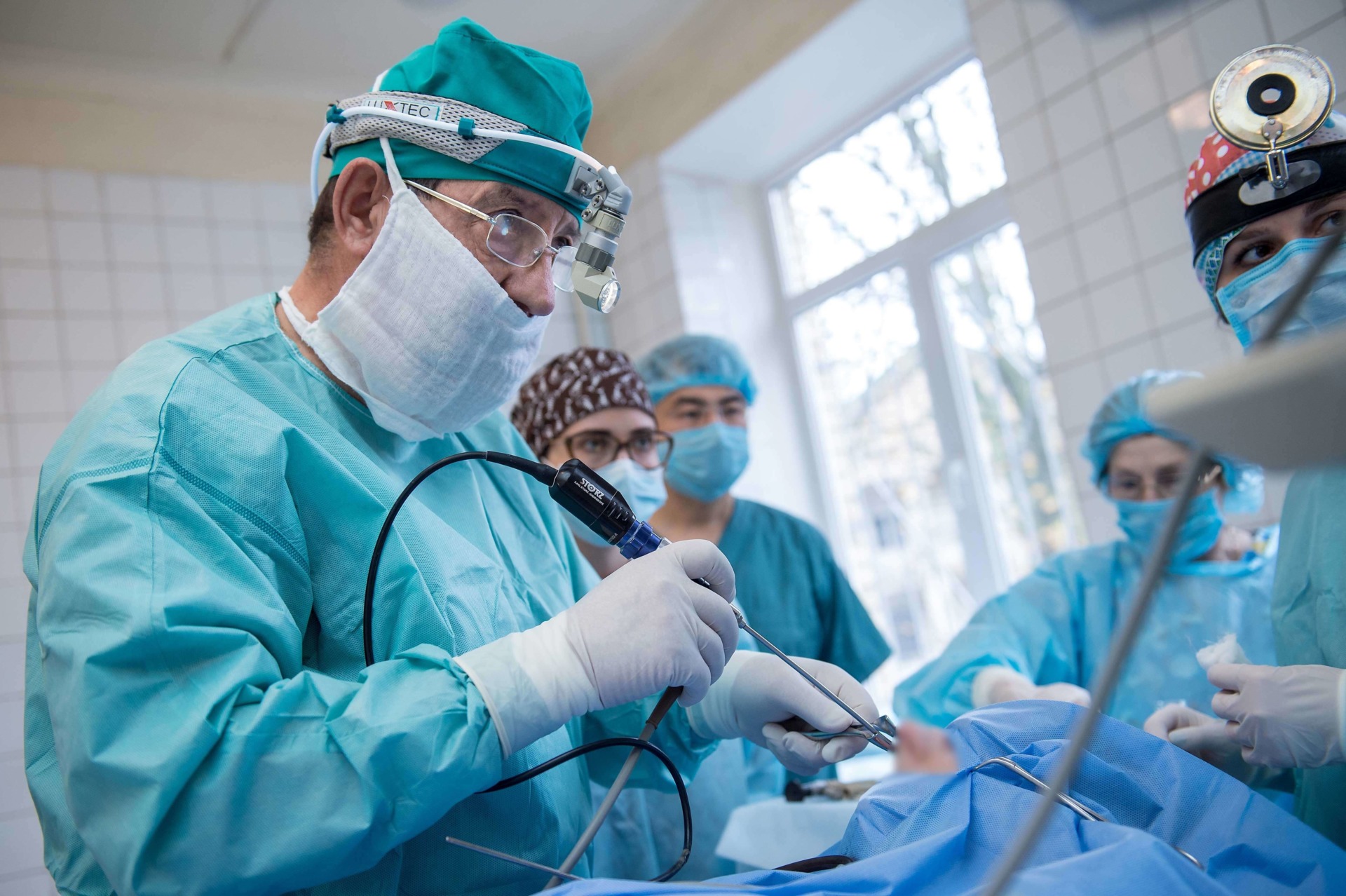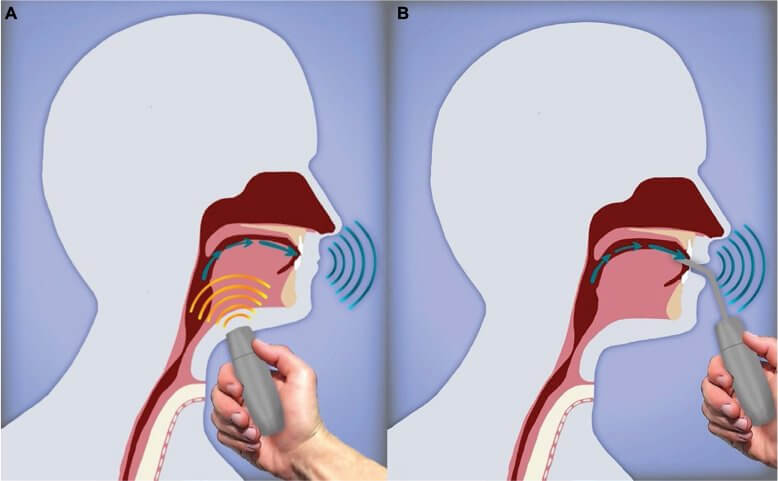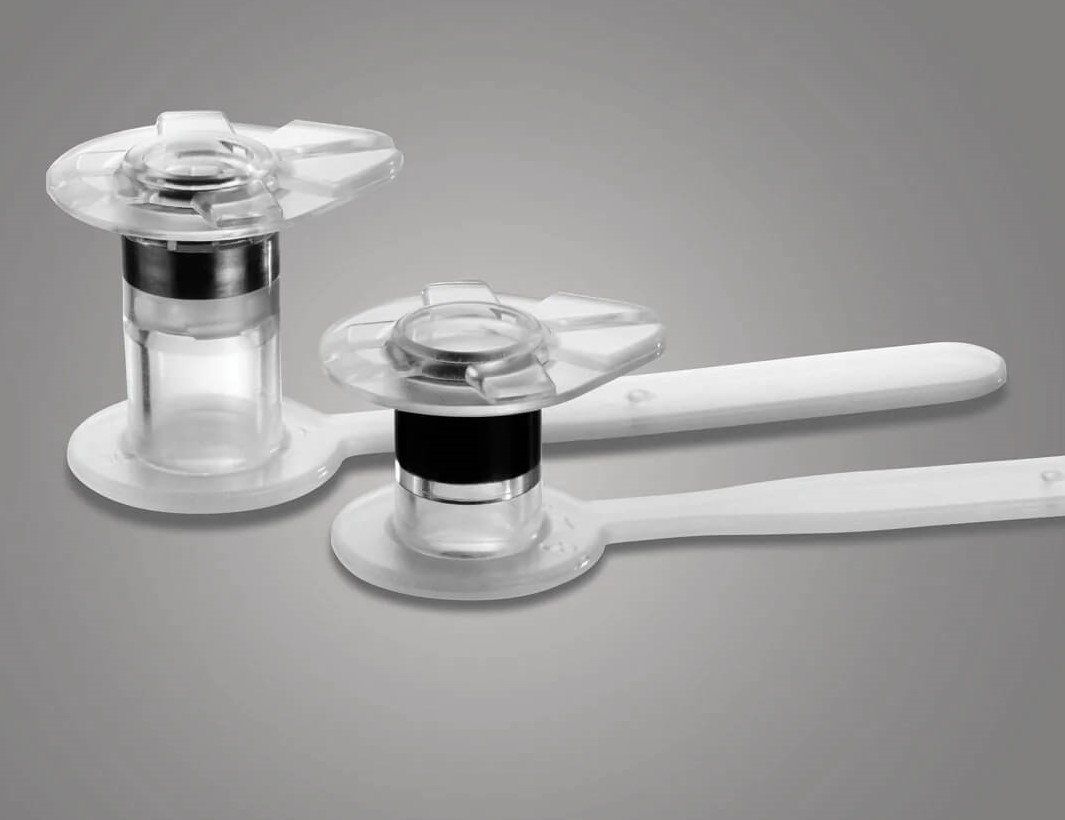Calls for Ukraine
Calls for Europe
Calls for USA
Laryngeal cancer (throat cancer) is relatively rare compared to other cancers – in about 1-5% of cases. However, in the structure of the incidence of cancer of the upper respiratory tract, it accounts for 40-60%. The disease occurs mainly in men over 40 years of age. The ratio of men to women suffering from laryngeal cancer is 20:1. Women under the age of 20 are more often affected.
Laryngeal cancer is mainly treated with surgery and radiation therapy. For small tumors, independent radiotherapy can be used, as well as organ-preserving operations – removal of the vocal cords, partial resection of the larynx. In the later stages, a total laryngectomy (complete removal of the larynx) is mainly performed with the formation of a lifelong tracheostomy.
The most severe consequence of laryngectomy for patients is loss of voice. Some patients even refuse surgery for this reason, with fatal consequences. Currently, voice rehabilitation is an integral aspect of the surgical treatment of laryngeal cancer. The Kiev Institute of Otorhinolaryngology named after A. S. Kolomiychenko in Ukraine offers a wide range of different technical and surgical methods of voice restoration, such as: the formation of an esophageal voice, the use of an electrolarynx, as well as tracheoesophageal shunting with voice prostheses.
Voice rehabilitation provides a fairly high level of adaptation of the patient in society, including the restoration of the capacity of voice workers – teachers, translators, guides, announcers, etc.

One of the priority areas of scientific activity of the Kyiv Institute of Otorhinolaryngology is the improvement of methods for early diagnosis and treatment of malignant diseases of the ENT organs, their relapses and metastases. Along with this, the doctors of the institute provide highly qualified medical care to patients with ENT tumors.
The Department of Oncopathology of ENT Organs is designed for 70 beds. This is the largest specialized branch in Europe. For comparison, a conventional oncological hospital accommodates an average of 30-40 patients. Annually, the hospital admits up to 1500 people, 2500 patients undergo outpatient therapy. It carries out diagnostics and treatment of the most difficult patients who come from all regional hospitals and clinics in Ukraine.
High-quality diagnostics and the choice of effective treatment tactics are facilitated by the cooperation of the department with the X-ray and radiological departments of the institute, as well as the scientific and practical center for radiation diagnostics of the National Academy of Medical Sciences (CT and MRI diagnostics). Histological analysis of tumors is performed in the department of pathomorphology of the Institute. It is possible to perform an intraoperative express biopsy. Treatment of tumors of the head and neck, including cancer of the larynx, is carried out using such methods as surgery, radiation therapy, chemotherapy and polychemotherapy, biotherapy.
At present, the rehabilitation of vocal voice function in patients who have undergone laryngectomy is possible in various ways – traditional (using speech therapy techniques and voice-forming devices) and new (using surgical approaches developed in recent years).
The esophageal voice is nothing more than the ability to burp air out of the esophagus. This technique has one definite plus – the patient does not depend on technical devices and does not require surgery. However, there are also disadvantages. Mastering and developing new reflexes: swallowing air into the esophagus and pushing it out during a conversation is a very difficult process for many people. The volume of the esophagus is not very large (only 80-120 ml). This amount of air is not enough for the patient for prolonged phonation, he constantly has to replenish the air in the esophagus, which makes speech intermittent.
Besides, there is a high risk of pharyngospasm, as well as irritation and inflammation caused by the ingress of gastric juice into the esophagus. An additional disadvantage is the psychogenic factor – for many patients, this method of voice restoration seems unnatural and uncomfortable, which leads to emotional disorders.

Another direction of voice rehabilitation of patients after removal of the larynx is the use of voice-forming devices of various designs. Depending on the principle of operation, modern devices are conditionally divided into two groups:
The effectiveness of the use of voice-forming devices is considered low due to the low quality of the voice they reproduce. The use of electrolarynx is associated with certain disadvantages: the sound they reproduce is monotonous, devoid of intonation, with a metallic tint. Speech intelligibility largely depends on the clarity of articulation and the device model (analogue, digital). In addition, it must be carried with you all the time, which is associated with certain inconveniences for the patient.
One of the most effective methods of voice rehabilitation after removal of laryngeal cancer is based on the principle of shunting. During the operation, the doctor creates an anastomosis between the pharynx and the trachea or the esophagus and the trachea. Currently, there are two main types of such operations:
The purpose of the first technique is to form a protective valve mechanism from the patient’s own tissues. According to statistics, this operation allows restoring voice function after removal of the larynx in 86% of patients, and protective function in 70% of patients.
With the development of modern medicine and the pharmaceutical industry, a relatively new way to restore voice function has appeared – tracheoesophageal bypass with valve replacement (TBVR). Abroad, this technique has long been the “gold standard”, however, in Ukraine only a few clinics practice it.
According to studies, bypass with prosthetics allows patients to restore voice function in 93% of cases, while the quality of the voice is much higher than the esophageal one. TBVR is a modified surgical technique in which the surgeon creates an anastomosis between the trachea and the esophagus using a special silicone valve, the esophageal prosthesis. It allows air to flow towards the esophagus and at the same time blocks the contents of the esophagus from entering the trachea. By closing the tracheostomy, a person redirects the flow of air into the esophagus. At the same time, its walls vibrate, which contributes to the reproduction of a sufficiently loud, even and controlled voice.
To create a voice, the patient only needs to cover the tracheostomy with a finger. In order to increase comfort, special air filters have been created, which, in addition to the direct filtration function, also have valve devices for closing the tracheostomy. Tracheoesophageal bypass with valve replacement can be performed both simultaneously with the removal of the larynx, and some time after the operation.

At the Institute of Otorhinolaryngology named after A.S. Kolomiychenko of the National Academy of Medical Sciences of Ukraine, operations to restore the voice after removal of the larynx for cancer are performed using modern Blom Singer Inhealth voice prostheses (USA). Over the past 35 years, these devices have become the international standard for voice restoration, allowing thousands of patients around the world to regain their ability to speak.
If you or your loved ones need organ treatment or voice restoration after removal of the larynx, call one of the phones listed on the site or fill out the online form. The doctor-coordinator will contact you as soon as possible and answer all your questions.
Please rate the work of MedTour
